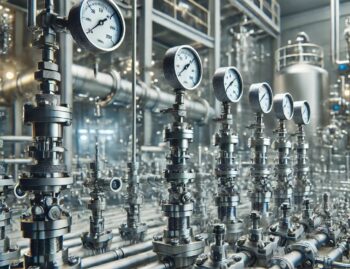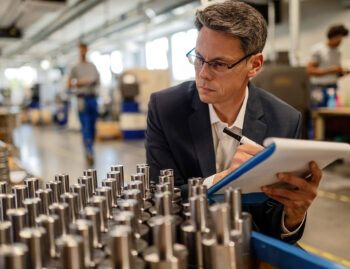
The costs of the 1TP5Valves are a critical aspect to consider in the manufacturing industry and in process engineering.
These valves are essential components in a wide range of industrial applications, from fluid handling in the chemical industry to flow control in oil and gas systems.
To fully understand the costs associated with needle valves, it is necessary to analyse various aspects, from the initial acquisition costs to the operational and maintenance costs over their lifetime.
Details of the costs of needle valves:
- Acquisition cost:
Purchase price:
The purchase price of a needle valve can vary widely depending on its characteristics.
High-quality needle valves, made of materials resistant to corrosion, can be used for the #corrosion and wear and tear, they tend to be more expensive than lower quality ones.
In addition, needle valves of well-known brands tend to be more expensive than generic valves.
Shipping and transport costs:
If the valve is manufactured at a location distant from the site of 1TP5Installationshipping costs can be significant and should be included in the quotation.
Costs associated with selection:
Choosing the right valve for a specific application may require testing, analysis and consultation with valve experts, which adds to the cost of the valve. 1TP5Engineering y #Design.
- Installation costs:
Labour:
The installation of a needle valve may require specialised skills and experience.
The labour costs associated with installation, including site preparation, pipe connection and performance testing, must be considered.
Tools and equipment:
Specific tools and equipment, such as torque spanners, flow meters and welding devices, may be required to properly install the valve.
- Operational costs:
Energy consumption: Some 1TP5Valves needle roller conveyors, such as motorised or pneumatic, may require power to operate.
This adds electricity or compressed air costs to the continuous operation of the valve.
Maintenance costs:
Needle valves require periodic maintenance to ensure proper operation.
This includes replacement of seals, gaskets and other worn parts.
Maintenance costs may also include hiring maintenance personnel or subcontracting repair services.
- Maintenance costs:
Spare parts:
Maintaining an inventory of spare parts is essential to minimise downtime in case of failure.
Spare parts may include seals, gaskets, actuators, electrical or pneumatic components.
Maintenance manpower:
Labour costs associated with maintenance activities, which may be scheduled or unexpected, should be considered.
This includes the time maintenance staff spend on repairs and the cost of their wages and salaries. #benefits.
Inspections and tests:
Regular inspections and functional tests should be carried out to detect and prevent problems before they become costly breakdowns.
Cleaning and refurbishment costs:
In industries with high standards of hygiene, such as the 1TP5Food o #pharmaceuticalsIn order to comply with regulations, periodic cleaning and reconditioning is required.
- Replacement costs:
Obsolescence:
As the #echnologyIf the needle valves are used, it is possible that older needle valves may become obsolete.
This may require investment in new valves and their installation.
Wear and corrosion:
In aggressive environments, needle valves may wear or corrode prematurely, which may result in their replacement earlier than planned.
- Compliance costs:
Environmental and safety compliance:
Some industries are subject to stringent safety and security regulations, and some industries are #environment.
Compliance costs, such as audits, testing and documentation, should be considered in the budget.
In short, the costs associated with ZAES needle valves are diverse and can vary depending on the specific application and conditions.
Effective management of these costs throughout the life cycle of the valve is essential to ensure performance, durability and regulatory compliance.
This implies a 1TP5Analysis detailed costing at each stage, from procurement to replacement, to make informed decisions and optimise investment in these critical components in a variety of different ways. #industries.









